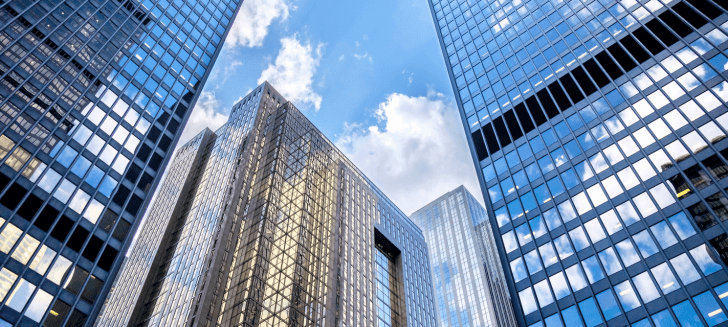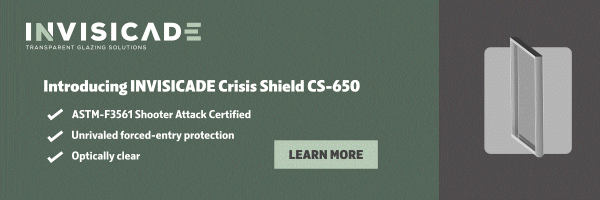
When evaluating glass protection strategies, the decision often comes down to two primary options: shatterproof glass (also referred to as safety glass or laminated glazing) and security window film. From forced entry to natural disasters, traditional glazing leaves buildings vulnerable to impact, intrusion, and even liability.
So, which solution offers better protection, and which one makes the most sense for your building’s needs and budget?
Let’s break it down.
What Is Shatterproof Glass?
Shatterproof glass is typically manufactured by bonding panes of glass with an interlayer—commonly polyvinyl butyral (PVB)—to create what is referred to as laminated safety glass. This process enables the interlayer to hold the shards together when the glass breaks, minimizing the risk of injury and slowing down penetration.
Performance Advantages:
· High impact resistance
· Meets safety glazing requirements (ANSI Z97.1, CPSC 16 CFR 1201)
· Often required in applications exposed to hurricane-force winds or seismic activity
· Offers consistent optical clarity and sound attenuation benefits
Limitations:
· Often requires full replacement of existing glazing systems
· High cost for materials, labor, and potential downtime
· Difficult to retrofit in occupied buildings or multi-site portfolios
· Longer lead times for design, sourcing, fabrication, and installation
What Is a Security Window Film?
Security window film is a multi-layer film applied to the interior surface of existing glazing. It is engineered to bond to glass and hold shards in place during impact or blast events. Properly anchored using wet-glaze or mechanical anchoring systems can significantly enhance window security without replacing existing glass. In one sense, security window film is building laminated glass in situ.
Performance Advantages:
· High impact resistance
· Meets safety glazing requirements (ANSI Z97.1, CPSC 16 CFR 1201)
· Offers consistent optical clarity and sound attenuation benefits
· Can meet or exceed ASTM F3561 and GSA/ISC performance standards
· Retains glass fragments during forced entry or blast events
· Compatible with existing storefronts, curtain walls, and fixed lites
· Allows for faster, non-invasive installation—even in occupied buildings
· More cost-effective than laminated glass upgrades
Limitations:
· Lower base-level impact resistance compared to laminated glass (without anchoring noted above)
· Understanding design impacts on performance which varies depending on thickness (e.g., 8 mil, 14 mil, 21 mil) and installation quality
Shatterproof Glass vs. Security Window Film: Side-by-Side Comparison
| Criteria | Shatterproof Glass | Security Window Film |
| Impact Resistance | High | High (with anchoring) |
| Cost Efficiency | Higher upfront cost | Lower overall cost |
| Retrofit Compatibility | More Difficult (requires removal) | Yes (applied to existing glass) |
| Installation Time | Weeks to months | Hours to days |
| Disruption to Occupants | High | Minimal |
| Compliance & Testing | Meets security/impact standards (ASTM, GSA) | Meets security/impact standards (ASTM, GSA) |
| Customization | Limited | High (heat rejection, tint, UV, branding overlays) |
Application Context: Where Each Solution Excels
Shatterproof glass is often specified during new construction or full-scale renovations where long-term structural upgrades are feasible. It is ideal for:
- High-wind or seismic zones
- Institutional new builds (hospitals, government, education)
- Situations requiring integrated safety glazing from the outset
Security window film shines in retrofitting environments where cost, downtime, and logistics are key concerns. Ideal applications include:
- Retail storefronts
- Airports and transportation hubs
- Commercial high-rises and multi-site portfolios
Why Security Film Delivers More Than Meets the Eye
When applied by certified professionals and paired with the correct anchoring system, security window film can perform on par in important situations with laminated safety glass at a fraction of the cost. The key lies in expert specification and proper installation—areas where NGS leads the industry.
As a trusted partner to Fortune 100 corporations, federal agencies, and national REITs, NGS offers:
- Product-agnostic recommendations from the top brands in safety and security film (including 3M™, Solar Gard®, and Riot Glass®)
- Comprehensive risk assessments to match film systems with site-specific threats
- ASTM- and GSA-tested installations, fully bonded and insured to the highest levels
Coast-to-coast mobilization, enabling rapid deployment across portfolios
In addition, you can explore advanced security solutions like Invisicade from NGS, offering hybrid glass-film technologies that combine the best of both worlds.
Final Verdict: Which Offers Better Glass Protection?
Both shatterproof glass and security window film serve critical roles in glass protection. But for most retrofit scenarios where efficiency, compliance, and scalability matter, security window film is the strategic choice.
NGS helps building owners and facility managers implement film-based window security solutions that:
- Comply with impact resistance standards
- Reduce liability and insurance risk
- Deter intrusions and delay forced entry
- Improve energy efficiency and occupant comfort (when paired with solar film)
Contact NGS for a tailored risk assessment and learn how our nationwide team can help you retrofit smarter.



